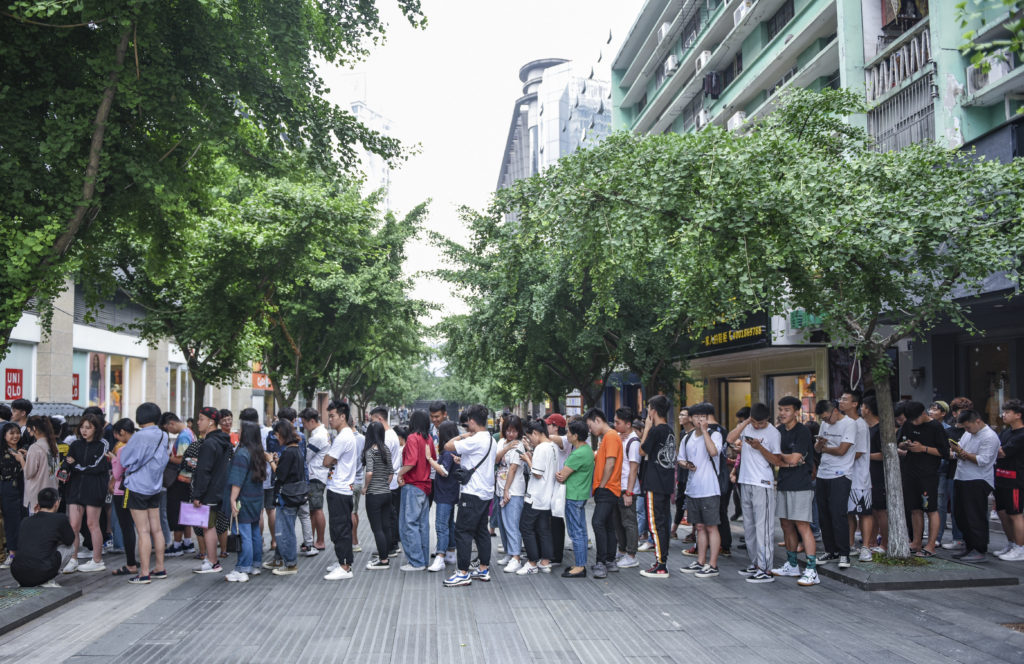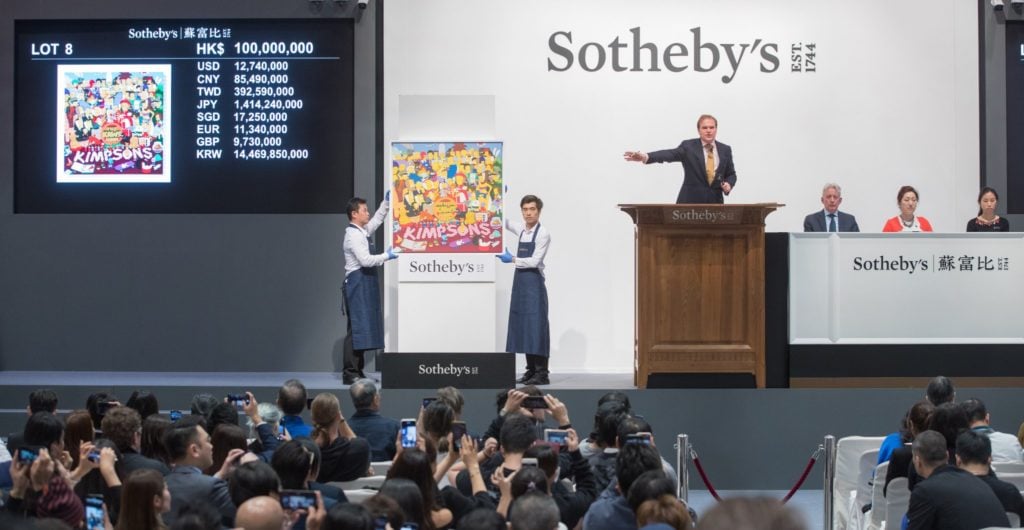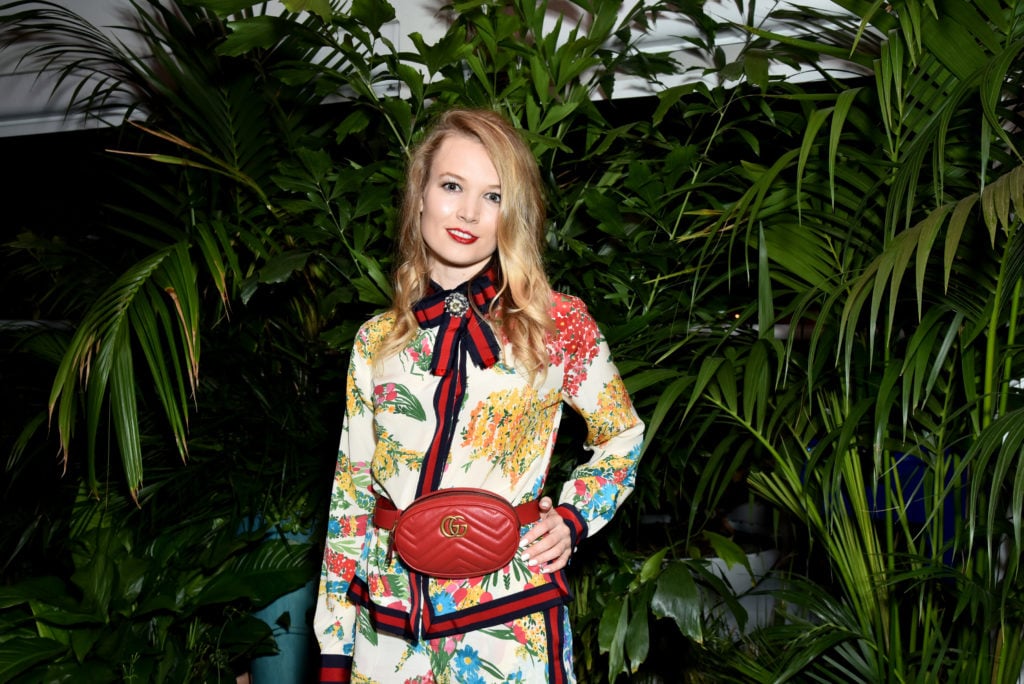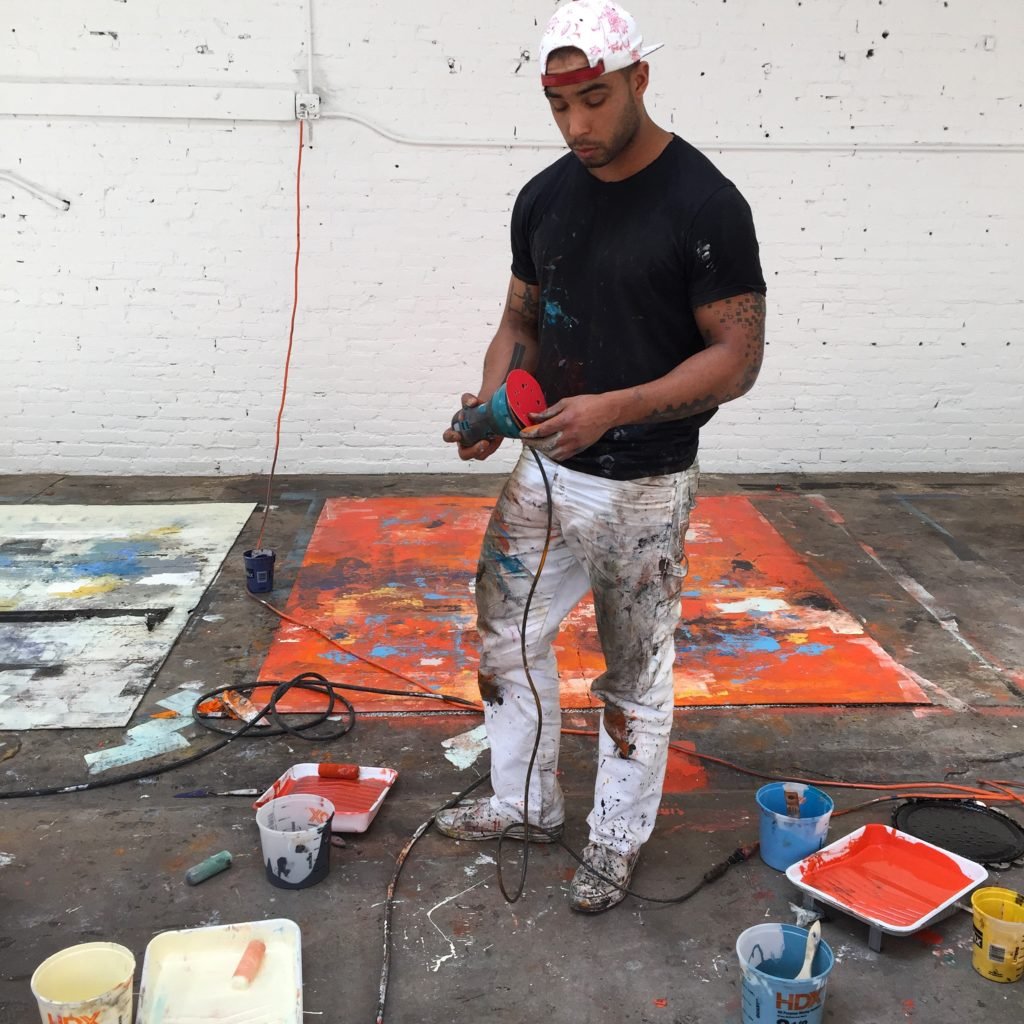Analysis
Cracking the Millennial Market: How Art Businesses Are Tweaking Their Strategies to Target the Next Generation of Collectors
Art dealers and auctioneers are getting creative to tap into the coveted new demographic.

When KAWS’s painting of characters from The Simpsons sold for $14.8 million at Sotheby’s Hong Kong in March, the news seemed to herald the buying power of a new generation of art collectors. Nearly half of the attendees at the sale, which was dedicated to the private collection of 48-year-old Japanese DJ and fashion designer NIGO, were under 40 years old. “The auction room suddenly got a lot hipper, with all these cool millennial buyers in hoodies,” Edie Hu, art advisory specialist at Citi Private Bank in Hong Kong, told Bloomberg after the auction.
Millennials, now ages 21 to 38, offer huge new market potential for auction houses, dealers, and art advisers—and not only for artists like KAWS (who is 45). They are the largest generation in the US labor force, numbering 56 million, according to the Pew Research Center. They’re also the fastest-growing segment of collectors among high-net-worth clients surveyed last year by US Trust, with eight percent more owning art in 2018 than the previous year.
“The majority of collectors are Baby Boomers,” says art advisor Heather Flow. “They will soon transfer their wealth, and their collections, to their millennial kids,” and it will be the largest wealth transfer in world history, with estimates of the impending inheritance ranging up to $68 trillion.
We spoke to a few experts in the field about their strategies for targeting this maturing new demographic of art collectors.

Sotheby’s auction in Hong Kong, 2019. Courtesy of Sotheby’s.
Find the Right Price Points
Many younger collectors came of age in an anemic labor market, and many of them continue to have less buying power than preceding generations, which has implications for price points.
It took Ellie Rines, who says that two-thirds of the clients at her gallery in New York, 56 Henry, are under 40, a while to nail the entry level for younger buyers. But she now says she’s found that a good price point is around $500 to $700—“the same amount you spend on a nice pair of shoes.” Indeed, despite her large percentage of millennial buyers, they account for only 30 percent of her revenue. Former dealer Patton Hindle’s now-shuttered New York gallery, yours, mine & ours, also often sold work for under $1,000. For Rines, it’s worth it: “I’m very interested in being the first place that someone buys art.”
And it’s not only young galleries dealing in three-digit sales—it’s auctioneers, too. Phillips’s online-only “Unbound” auctions head quite a ways down the price spectrum. Recent sales included a Christo lithograph-and-collotype work that sold for $750 and an Elizabeth Peyton Xerox print that went for just $375.

Elena Soboleva attends a dinner at Faena Hotel in Miami Beach. Photo by Jared Siskin/Patrick McMullan via Getty Images.
Living Online
Many sellers are beefing up their online offerings to meet millennials where they (largely) live. This cohort is exceedingly more likely to buy online than their predecessors: 93 percent of high-net-worth millennials reported having bought art online, according to the 2019 Art Basel/UBS market report, whereas a majority of Baby Boomers never had.
Sotheby’s CEO Tad Smith affirmed that the house is “dramatically” going after millennials. “A great deal of what we’ve been doing over the past few years is to make it really, really easy for people to do business with us through digital technologies,” he told Bloomberg in the wake of the KAWS sale.
Even the highest-end galleries, such as David Zwirner, today offer online “viewing rooms” to complement their brick-and-mortar exhibitions. Last year Zwirner also recruited the millennial social-media influencer Elena Soboleva, known partly for appearing in elaborately color-coordinated Instagram posts alongside contemporary art, as the gallery’s first-ever online sales director.
Younger buyers aren’t shopping online solely because they’re more comfortable there, however. Rather, they seek out the convenience because they’re “high-spending and time-poor” due to their deep involvement with their own businesses, according to the Art Basel report. Sixty percent of those surveyed by US Trust agreed that “as my wealth has increased, demands on my time have increased.”
Scott Nussbaum, Phillips New York’s head of 20th-century and contemporary art, says that the auction house has responded by streamlining its website. “Most people go there looking for something specific, and we’ve made it easier to find it,” he says.
“It’s about respecting people’s time and attention span,” he adds. “We’ve made it possible to leave advance bids immediately, through your phone. Or, you can follow along with a sale live via the app and bid instantly.”

Jeff Koons, Lucas Zwirner, and Luke Syson (left to right) recording the first episode of David Zwirner’s podcast, Dialogues. Image courtesy of David Zwirner.
Trust in the Pod
When those younger buyers aren’t bidding via phone, they often have their headphones on, listening to podcasts. According to a recent LinkedIn study, some 42 percent of people under 35 listen to podcasts, and major art-world players like Sotheby’s, Lisson Gallery, David Zwirner, and Sean Kelly have all bet on the medium.
Zwirner says its “Dialogues” podcast of conversations between artists and intellectuals garnered a quarter of a million streams during its first season.
Unlike Zwirner’s and Lisson’s podcasts, which feature the galleries’ own artists, Kelly says that at his gallery, “we’re not using it as a promotional tool.” Instead, Kelly’s “Collect Wisely” podcast targets art buyers explicitly, and solely interviews collectors, from hedge-funder J. Tomilson Hill to marketing guru Pamela Joyner to young collector Gary Yeh, who graduated from Duke in 2017.
“People love hearing passionate collectors talk about their experience,” Kelly said. Episodes have averaged about 1,500 listeners, but one of the biggest indicators of success in Kelly’s mind is that he hears advisors recommending “Collect Wisely” to their clients.

Hugo McCloud at work in his studio. Courtesy of Sean Kelly Gallery.
All About Identity
Millennials are the most racially and ethnically diverse generation in the nation’s history, according to the Pew Research Center, and that fact has huge ramifications for the art market.
“We’re in the age of identity,” says Evan Beard, a global art services executive at US Trust, Bank of America Private Wealth Management. “A lot of millennial collectors want to own [work by] female artists or African American artists. Biography and identity are hugely important to young collectors.”
Flow concurs. “The younger generation of collectors is diverse and they are global,” she says, “and the senior sales staff interacting with them at galleries should look like them. It’s great to be able to buy online, but having conversations at the gallery with someone similar to them is still key.”
Dealer Mariane Ibrahim, who estimates that her gallery’s millennial buyers have doubled in number to 20 percent in recent years, points out that the young African American collectors among her clientele are changing the emerging art market by building the careers of young African diaspora artists. “They operate in a network, sharing information and investing in artists of the same generation,” says Ibrahim, whose own background is Somali-French.
Sean Kelly stressed that signing younger artists is also key to his continuing success, and recent arrivals to his roster include Hugo McCloud, Landon Metz, and Sam Moyer, all born after 1980. Most of the young collectors recently profiled for a story on artnet News ranked millennial artists such as Amalia Ulman, Austin Lee, Jordan Casteel, Cui Jie, and Loie Hollowell among their favorites.
There’s also reason to expect that women will be the leading buyers in the next generation. “Among the prominent Baby Boomer collectors I know,” Flow says, “90 percent of the children who are taking over their collections are their daughters.”
Data from the US Trust survey points in the same direction. While the percentage of men surveyed who are buying art grew by three percent between 2017 and 2018, the proportion of women more than doubled, from 16 to 36 percent.
“A change is coming,” Flow says.
Follow artnet News on Facebook:
Want to stay ahead of the art world? Subscribe to our newsletter to get the breaking news, eye-opening interviews, and incisive critical takes that drive the conversation forward.
SHARE

No comments:
Post a Comment